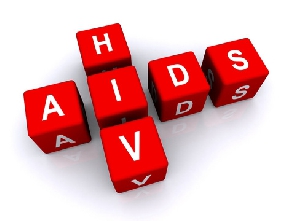The Federal Government has revealed that despite the COVID-19 pandemic, it has identified and brought to treatment 350,000 new persons with HIV in the last 18 months. It noted that this is a major breakthrough from the yearly 60,000 new persons with HIV identified and brought to treatment years back.
It however stated that for the country to completely control the HIV epidemic and achieve the 95-95-95 target of the UNAIDS, it must creatively and effectively prevent mother-to-child transmission of HIV.
The Director-General, National Agency for the Control of AIDS (NACA), Dr. Gambo Aliyu, made this known during the national dialogue on prevention of mother-to-child transmission (PMTCT) of HIV.
“It is not the PMTCT that is not working but the strategy that we have to tweak. If you look at the numbers we had as far back as 2006, we had about 13,000 women on treatment. Today, as we are talking, as of 2019, about 421,000 women are on treatment; this is over 200 per cent increment. This is something that shows that a lot of efforts have gone in there and a lot has come on.
“However, virtually every woman we were able to identify and bring usually ends up in care. In terms of getting them for treatment, once we have access to them, and once we are able to test them, we will make sure we deliver on that. Therefore, the problem is getting them. Six million out of eight million are not attending antenatal care. So we are battling with two million that are attending antenatal care in implementing these services. But for those that we have access to, the services are delivered well.
“The question now is – how do we provide access to the mothers that traditionally do not come to facilities to deliver? Or they come to facilities to register for antenatal services but they go back somewhere to deliver, especially at the point when they’re supposed to continue to remain with us and continue to take these medications and deliver while under supervision?
“How do we come up with a strategy just as we did two to three years back when we were battling with 60,000 people that were identified every year and brought to treatment? Last 18 months, 350,000 people were identified and brought to treatment despite covid-19. This number is a break from the previous 50,000 to 60,000 a year. Something must have taken place, and that something is thinking that has gone outside the box.
“This is exactly what we want for PMTCT. We want that out of the box thinking and make sure we go out in the community; allow them to access HIV services and identify those that are positive among them, and make sure we take the services to them if they’re not going to come to our facility to take the services and count the numbers.
“If we are able to do that, I guarantee all of us that in the next 18 months, we will see this huge rebound that we have noticed with ART surge, and it is something that we have no option to do than to do simply because the rate at which we are moving now nationally, we are definitely going to control HIV epidemics in terms of programmatic indicators, which is the 95-95-95.”
The Minister of Health, Dr. Osagie Ehanire, said several pillars cutting across leadership, policy and coordination have been implemented. Last year, a platform for multi-stakeholder partnership coordination, the Reproductive, Maternal, Newborn, Child, Adolescent and Elderly Health plus Nutrition (RMNCAEH+N) coordination platform, to advance coordination and integration of maternal, newborn and child health was launched, he said.
“As of today, our data still points to overall underachievement in key result areas. For example, PMTCT coverage is only 37 percent and 21,000 new pediatric HIV infections were recorded in children aged zero to four years in 2019. This is not acceptable. Major bottlenecks, which have continued to impact PMTCT negatively, include the variable coverage of antenatal care (ANC) services, unmet need for family planning, poor testing coverage for pregnant women, and poor tracking and retention in care for HIV exposed infants, among others.
“I am happy to note that the story is not all bleak; the evidence shows that the outcomes are much better for those in the program. Overall, we estimate that 88 per cent of pregnant women who test positive are on anti-retrovirals (ARVs). The results in some states are also commendable; notably, Kaduna has improved remarkably in antenatal coverage and testing, while Akwa Ibom has done very well with treatment and care for the mothers and infants. This gives me a lot of reassurance that we can achieve the favorable results we desire.”
Africa News of Thursday, 6 May 2021
Source: mynigeria.com

















